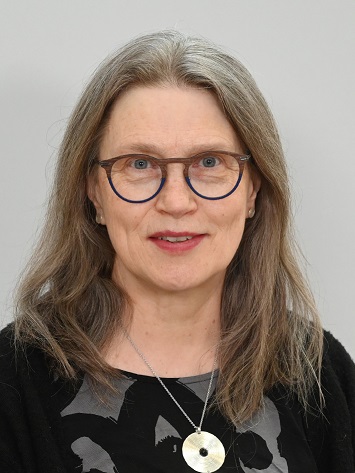Kirsti Kauristie appointed Vice-Chair of ESA's Space Safety Programme Committee
For more than a decade, Space Weather Researcher Kirsti Kauristie has served as Finland's delegate to the ESA Space Safety Programme Committee (Program Board of Space Situational Awareness, PB-SSA). Today in the Committee meeting, Kauristie was appointed Vice-Chair of the Committee for a three-year term.

Congratulations on your appointment as the Vice-Chair of the Administration of the ESA Space Safety Programme. What is your background and how did you end up in this job?
Kirsti Kauristie: I have studied theoretical physics at the University of Helsinki and received space weather as a subject for my master’s thesis at the end of my studies. I continued to study space weather also in the form of a doctoral thesis, and I have worked alongside academic research at the Finnish Meteorological Institute in space weather services. In 2011, Professor Hannu Koskinen was elected Chair of the PB-SSA, which required a new Finnish delegate to the programme and Hannu proposed me to attend. Today, I am a member of the so-called basic equipment of the programme and I have seen the composition of the board change several times – I believe that my long membership has also played a role in my election as Vice-Chair.
What does the appointment mean to you — what kind of tasks does the vice-chairmanship bring upon you?
The Chair of the Board is responsible for handling international negotiation situations: It is up to the chairperson – and vice-chairperson if necessary – to act as an objective actor and to resolve conflicts in order to ensure the smooth progress of the negotiations. From this perspective, I will understand the strategic activities of the programme more comprehensively than before, not only from Finland's perspective. As a delegate, my task was to promote Finland's national interests. With the vice-chairmanship, on the other hand, I am responsible, if necessary, for the overall smooth running of the negotiations.
What does the vice-chairmanship of the PB-SSA mean for Finland as a space state?
Decisions on the chairmanships are made between the main delegates, and the selection process aims to attract representatives from all Member States in turn to visible positions. It is always a great honour when these chairmanship or vice-chairmanship positions end up in Finland.
Space situational awareness has become increasingly important in recent years – Finland is also planning a national space situational awareness centre (Finnish Space Situational Awareness Center, FSSAC). Why has space situational awareness become such a central topic of discussion?
Our daily lives are increasingly dependent on space infrastructure, and space dependency is growing all the time. For example, geographic information systems and satellite-based communication may sometimes be exposed to changes in very unstable space weather. In terms of the functionality of satellite-based systems, the higher collision risks caused by the increasing amount of space debris must also be taken into account. Last but not least, the growing interest in space situational awareness is a reaction to the fact that the threshold for space activities has fallen considerably – today, space projects can be built not only by large space states but also by students and small companies. This transformation has raised public awareness of space weather and the state of outer space.
With what vision was the SSA programme originally established?
Originally, the programme included three areas: space weather monitoring, monitoring of so-called NEOs (Near-Earth Objects, i.e. near-Earth objects) and satellite monitoring. Over the years, however, ESA Member States decided to transfer the monitoring of satellites classified as sensitive to the EU. The name of the SSA Programme has also been changed: in the current name, Space Safety Programme has replaced Space Situational Awareness. This change reflects the programme's increasingly focused focus on sustainable use of space and the development of green space technology. ESA is committed to the “Zero Debris” principle, according to which all future ESA satellites should not increase space debris. This requires a clear life cycle analysis already carried out at the launch stage of satellites.
Which international space situation networks does ESA's Space Security Programme belong to?
ESA cooperates extensively with other space agencies, the closest partners of which are the US Space Administration NASA and the National Oceanic and Atmospheric Administration NOAA. With these, ESA is developing satellites that monitor the sun: NOAA has promised to monitor the activity of the sun between Earth and the Sun. ESA's Vigil satellite will look at solar outbursts slightly side by side from the so-called L5 point, from which it is easier to estimate the progression rate of solar outbursts towards the Earth and earlier see active areas on the surface of the Sun that may cause problems when turning to the Earth's sector.
Which are the most significant challenges you anticipate during your vice-chairmanship in PB-SSA?
The ESA PB-SSA is planning ambitious satellite projects that will be implemented over a relatively long period of time. ESA funding is always provided every three years at the organisation's ministerial meetings – promoting these long-term satellite projects will be challenging with occasional funding.
How will the ESA Space Safety Programme affect Finnish space activities in the future?
The Finnish space sector aims to develop instruments and services for ESA's situational awareness systems, which means that the activities of the Space Security Programme will continue to have an impact on Finnish space innovation. So far, ESA's space weather services have already involved Finnish research institutes, and space weather observations produced by ESA are already partly realised on the basis of instruments built by Finnish companies – in the future, I assume this cooperation will intensify further.




